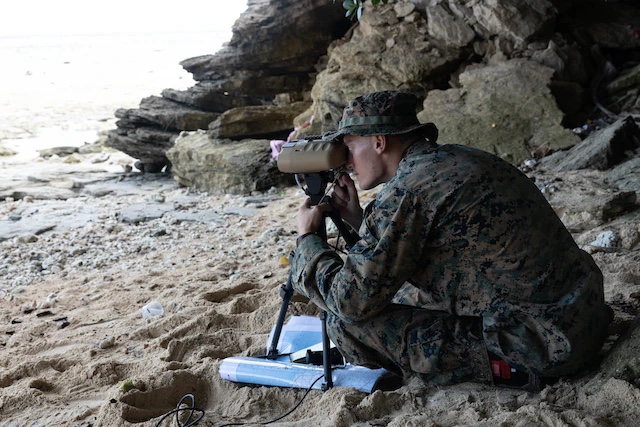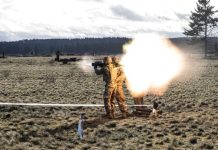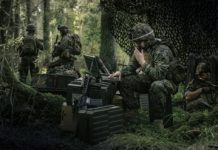
SORSOGON/LEGASPI, PHILIPPINES —
A Maritime Sensing Team with Marine Rotational Force-Southeast Asia completed a Maritime Domain Awareness training exercise at Lebanon Beach from October 9 to 12, 2023.
MDA refers to understanding anything associated with oceans, seas, and other navigable waters that could impact a nation’s security, safety, economy, or environment. The MRF-SEA MST, comprised of infantrymen, intelligence, surveillance, and reconnaissance systems engineers, communications, and intelligence Marines, establish remote sensing sites to provide situational awareness, threat detection, and prevention and to enable decision-making within an area of operations. These expeditionary sensing sites play a pivotal role in enhancing the maritime domain awareness picture and the overall lethality of joint forces.
During the training exercise, the MST and 1st Air Naval Gunfire Liaison Company’s Detachment Team 2 tested novel systems, software, and equipment that sharpened the cutting edge of what these mobile sensing units are capable of.
Throughout the exercise, communication Marines focused on establishing network and data services; the sensor operators set up a SIMRAD radar, a commercially available off-the-shelf radar, and hoisted it 30 feet into the sky. The SIMRAD radar is the primary sensor employed by the MST. Its small scale and portable size allow the team to maintain a minimal signature and footprint while still providing surveillance of the maritime domain.
“Maritime awareness and the Expeditionary Advanced Base Operations concept are tied hand-in-hand,”
-Capt. Philip Badrov, ADET Team Lead
“Employing the SIMRAD enables us to detect ship movement within straits and littorals,” said Capt. Philip Badrov, ADET Team Lead. “Using the data collected, we report suspected targets to higher echelons, contributing to the overall maritime awareness picture.”
Complementing the SIMRAD’s detection capabilities is the RQ-20B PUMA, a small, unmanned aircraft system equipped with a camera that provides essential visual data needed to identify suspected targets.
“[The PUMA] is a versatile collection tool that can be employed on-site,” said Sgt. Abigail Andrews, MST chief. “It’s hand-launchable with capabilities including a gimbaled camera capable of capturing full-motion video and photos.”
The MST combines these two types of sensors, the SIMRAD and the RQ-20B PUMA, to build a holistic view of the maritime domain.
The training culminated with a simulated close-air support scenario that validated the integrated capabilities of the SIMRAD and PUMA. Using the data from the SIMRAD to detect a target and the PUMA to identify it, Joint Terminal Attack Controllers from 1st ANGLICO could then coordinate close-air support attacks from a Hawker Hunter onto the simulated target. Moreover, the MST provided critical radar data directly to the U.S. 7th Fleet Maritime Operations Center, successfully demonstrating joint capabilities.
“Maritime awareness and the Expeditionary Advanced Base Operations concept are tied hand-in-hand,” Badrov added. “EAB with small teams and sensors en masse, we can eliminate gaps in radar coverage and further contribute to the awareness.”
MRF-SEA, an operational model under Marine Corps Forces Pacific, fosters planned exchanges with subject matter experts, promotes security goals with Allies and Partners, and strategically positions I Marine Expeditionary Force west of the International Date Line, solidifying its commitment to regional security and stability.
By Gunnery Sergeant Alexandria Blanche and 1st Lt. Charles T. Kimbrough | I Marine Expeditionary Force
You can skip to the end and leave a response. Pinging is currently not allowed.








